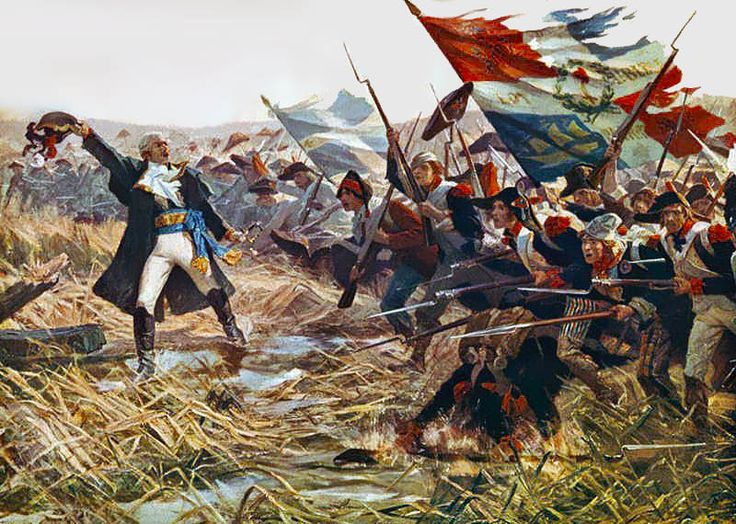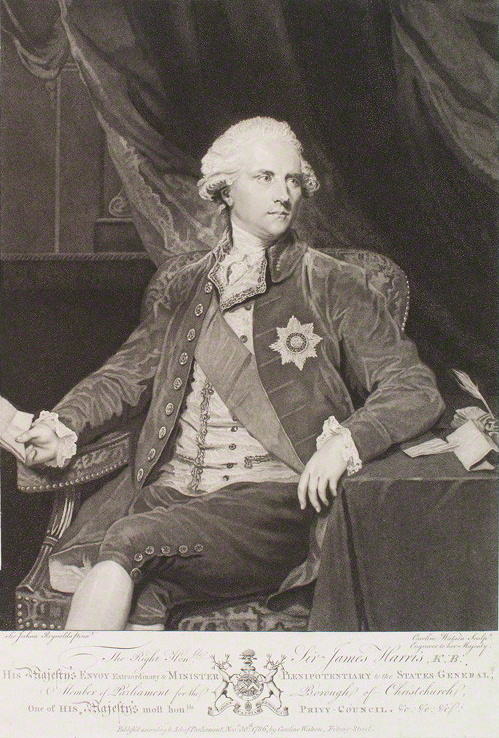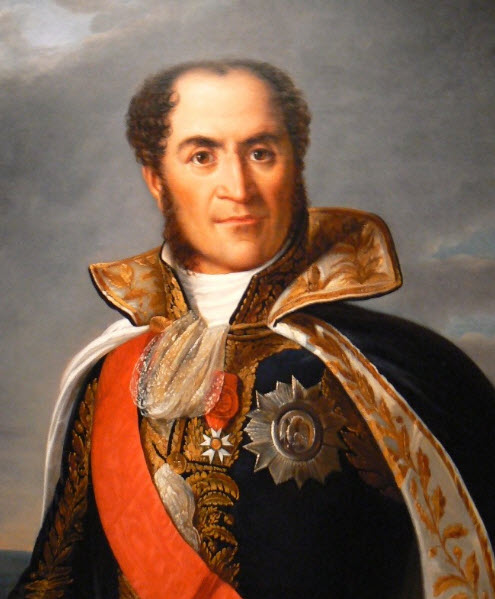|
Anglo-Russian Invasion Of Holland
The Anglo-Russian invasion of Holland (or Anglo-Russian expedition to Holland, or Helder Expedition) was a military campaign from 27 August to 19 November 1799 during the War of the Second Coalition, in which an expeditionary force of British and Russian troops invaded the North Holland peninsula in the Batavian Republic. The campaign had two strategic objectives: to neutralize the Batavian fleet and to promote an uprising by followers of the former ''stadtholder'' William V against the Batavian government. The invasion was opposed by a slightly smaller joint Franco-Batavian army. Tactically, the Anglo-Russian forces were successful initially, defeating the defenders in the battles of Callantsoog, Krabbendam and Alkmaar, but subsequent battles went against the Anglo-Russian forces. Following a defeat at Castricum, the Duke of York, the British supreme commander, decided upon a strategic retreat to the original bridgehead in the extreme north of the peninsula. Subsequently, an a ... [...More Info...] [...Related Items...] OR: [Wikipedia] [Google] [Baidu] |
War Of The Second Coalition
The War of the Second Coalition () (1798/9 – 1801/2, depending on periodisation) was the second war targeting French Revolution, revolutionary French First Republic, France by many European monarchies, led by Kingdom of Great Britain, Britain, Habsburg monarchy, Austria, and Russian Empire, Russia and including the Ottoman Empire, History of Portugal (1777–1834), Portugal, Kingdom of Naples, Naples and various German monarchies. Prussia did not join the coalition, while History of Spain (1700-1808), Spain supported France. The overall goal of Britain and Russia was to contain the expansion of the French Republic and to restore the monarchy in France, while Austriaweakened and in deep financial debt from the War of the First Coalitionsought primarily to recover its position and come out of the war stronger than when it had entered. The first half of the war saw the Coalition manage to drive the French back in Italy, Germany, and Holland, but they were not able to seriously t ... [...More Info...] [...Related Items...] OR: [Wikipedia] [Google] [Baidu] |
Battle Of Krabbendam
The Battle of Krabbendam (also called the Battle of Zijpedijk) of 10 September 1799 was fought during the Anglo-Russian invasion of Holland between forces of the French Republic and her ally, the Batavian Republic, under the command of French general Guillaume Marie Anne Brune on one side, and a British division under general Sir Ralph Abercromby on the other. The British division had established a bridgehead in the extreme north of the North-Holland peninsula after the Battle of Callantsoog (1799). Brune tried to dislodge them before they could be reinforced by further Anglo-Russian forces, but the British prevailed. This enabled the British and their Russian allies to land their expeditionary force and to break out of the bridgehead during the Battle of Bergen (1799). Background After the Battle of Callantsoog General Herman Willem Daendels with the 1st Batavian Division had fallen back all the way to the Schermer polder, as he deemed the ''Zijpe'' polder indefensible, b ... [...More Info...] [...Related Items...] OR: [Wikipedia] [Google] [Baidu] |
Battle Of Dogger Bank (1781)
The Battle of Dogger Bank was a naval battle that took place on 5 August 1781 during the Fourth Anglo-Dutch War, contemporaneously related to the American Revolutionary War, in the North Sea. It was a bloody encounter between a British squadron under Vice Admiral Sir Hyde Parker and a Dutch squadron under Vice Admiral Johan Zoutman, both of which were escorting convoys. Background In December 1780, Great Britain declared war on the Dutch Republic, drawing it militarily into the American War of Independence. The Dutch had for several years been supplying the Americans and shipping French supplies to the Americans in support of the American war effort, the reason behind the British declaration of war. The opening of hostilities with the Dutch meant that Britain's trade with countries on the Baltic Sea—where key supplies of lumber for naval construction were purchased—was potentially at risk, and that the British had to increase protection of their shipping in the ... [...More Info...] [...Related Items...] OR: [Wikipedia] [Google] [Baidu] |
Charles Pichegru
Jean-Charles Pichegru (; 16 February 1761 – 5 April 1804) was a French general of the Revolutionary Wars. Under his command, French troops overran Belgium and the Netherlands before fighting on the Rhine front. His royalist positions led to his loss of power and imprisonment in Cayenne, French Guiana during the Coup of 18 Fructidor in 1797. After escaping into exile in London and joining the staff of Alexander Korsakov, he returned to France and planned the Pichegru Conspiracy to remove Napoleon from power, which led to his arrest and death. Despite his defection, his surname is one of the names inscribed under the Arc de Triomphe, on Column 3. Early life and career Pichegru was born in a peasant family at Arbois (or, according to Charles Nodier, at Les Planches-près-Arbois, near Lons-le-Saulnier), in the then Franche-Comté (now in the Jura department of France). The friars of Arbois were entrusted with his education, and sent him to the military school of Brienne-l ... [...More Info...] [...Related Items...] OR: [Wikipedia] [Google] [Baidu] |
Low Countries Theatre Of The War Of The First Coalition
The Low Countries theatre of the War of the First Coalition, also known as the Flanders campaign, was a series of campaigns in the Low Countries conducted from 20 April 1792 to 7 June 1795 during the first years of the War of the First Coalition. As the French Revolution radicalised, the revolutionary National Convention and its predecessors broke the Catholic Church's power (1790), abolished the monarchy (1792) and even executed the deposed king Louis XVI of France (1793), vying to spread the Revolution beyond the new French Republic's borders, by violent means if necessary. The First Coalition, an alliance of reactionary states representing the Ancien Régime in Central and Western Europe – Habsburg Austria (including the Southern Netherlands), Prussia, Great Britain, the Dutch Republic (the Northern Netherlands), Hanover and Hesse-Kassel – mobilised military forces along all the French frontiers, threatening to invade Revolutionary France and violently restore the m ... [...More Info...] [...Related Items...] OR: [Wikipedia] [Google] [Baidu] |
First Coalition
The War of the First Coalition () was a set of wars that several European powers fought between 1792 and 1797, initially against the constitutional Kingdom of France and then the French Republic that succeeded it. They were only loosely allied and fought without much apparent coordination or agreement; each power had its eye on a different part of France it wanted to appropriate after a French defeat, which never occurred. Shusterman, Noah (2015). ''De Franse Revolutie (The French Revolution)''. Veen Media, Amsterdam. (Translation of: ''The French Revolution. Faith, Desire, and Politics''. Routledge, London/New York, 2014.) Chapter 7, pp. 271–312: The federalist revolts, the Vendée and the beginning of the Terror (summer–fall 1793). Relations between the French revolutionaries and neighbouring monarchies had deteriorated following the Declaration of Pillnitz in August 1791. Eight months later, following a vote of the revolutionary-led Legislative Assembly, France declar ... [...More Info...] [...Related Items...] OR: [Wikipedia] [Google] [Baidu] |
Orangism (Dutch Republic)
In the history of the Dutch Republic, Orangism or ''prinsgezindheid'' ("pro-prince stance") was a political force opposing the ''Staatsgezinde'' (pro-Republic) party. Orangists supported the Princes of Orange as Stadtholders (a position held by members of the House of Orange) and military commanders of the Republic, as a check on the power of the '' regenten''. The Orangist party drew its adherents largely from traditionalists – mostly farmers, soldiers, noblemen and orthodox Protestant preachers, though its support fluctuated heavily over the course of the Republic's history and there were never clear-cut socioeconomic divisions. History The coup of stadtholder Maurice against Oldenbarnevelt Orangism can be seen as a continuation of the political opposition between the remonstrants and counter-remonstrants during the Twelve Years' Truce (1609-1621). The Remonstrants were tolerant and republican, with a liberal view on biblical interpretation, no belief in predestination ... [...More Info...] [...Related Items...] OR: [Wikipedia] [Google] [Baidu] |
Dutch Republic
The United Provinces of the Netherlands, commonly referred to in historiography as the Dutch Republic, was a confederation that existed from 1579 until the Batavian Revolution in 1795. It was a predecessor state of the present-day Netherlands and the first independent Dutch people, Dutch nation state. The republic was established after seven Dutch provinces in the Spanish Netherlands Dutch Revolt, revolted against Spanish Empire, Spanish rule, forming a mutual alliance against Spain in 1579 (the Union of Utrecht) and declaring their independence in 1581 (the Act of Abjuration). The seven provinces it comprised were Lordship of Groningen, Groningen (present-day Groningen (province), Groningen), Lordship of Frisia, Frisia (present-day Friesland), Lordship of Overijssel, Overijssel (present-day Overijssel), Duchy of Guelders, Guelders (present-day Gelderland), lordship of Utrecht, Utrecht (present-day Utrecht (province), Utrecht), county of Holland, Holland (present-day North Holla ... [...More Info...] [...Related Items...] OR: [Wikipedia] [Google] [Baidu] |
Prussian Invasion Of Holland
The Prussian invasion of Holland was a military campaign under the leadership of Charles William Ferdinand, Duke of Brunswick, against the rise of the democratic Patriottentijd, Patriot movement in the Dutch Republic in September–October 1787 with the aim of disempowering the patriots and disarming the Free Corps, as well as reinstating William V of Orange as hereditary stadtholder in the Dutch Republic. Background On 7 June Johann Friedrich von Salm-Grumbach, Von Salm-Grumbach was appointed by the Defence Committee in Woerden as commander-in-chief and Quint Ondaatje as liaison officer of the troops in Holland. Salm was not recognized by all officers, and his new powers were legally controversial. On the 28 June, he marched to Woerden to capture Wilhelmina of Prussia, Princess of Orange, princess Wilhelmina of Prussia, the wife of the Prince of Orange. At the end of July Salm ordered conquering Palace Soestdijk and besieging Amersfoort. First came the arrest at Bonrepas ... [...More Info...] [...Related Items...] OR: [Wikipedia] [Google] [Baidu] |
House Of Orange-Nassau
The House of Orange-Nassau (, ), also known as the House of Orange because of the prestige of the princely title of Orange, also referred to as the Fourth House of Orange in comparison with the other noble houses that held the Principality of Orange, is the current dynasty, reigning house of the Netherlands. A branch of the European House of Nassau, the house has played a central role in the Politics and government of the Netherlands (1581–1795), politics and government of the Netherlands and elsewhere in Europe, particularly since William the Silent organised the Dutch Revolt against Spain, Spanish rule, which after the Eighty Years' War (1568–1648) led to an Dutch Republic, independent Dutch state. William III of Orange led the resistance of the Netherlands and Europe to Louis XIV of France and orchestrated the Glorious Revolution in England that established parliamentary rule. Similarly, Queen Wilhelmina of the Netherlands was instrumental in the Dutch resistance during W ... [...More Info...] [...Related Items...] OR: [Wikipedia] [Google] [Baidu] |
Patriots (Dutch Republic)
The (; ) was a period of political instability in the Dutch Republic between approximately 1780 and 1787. Its name derives from the Patriots () faction who opposed the rule of the stadtholder, William V, Prince of Orange, and his supporters who were known as Orangists (). In 1781 one of the leaders of the Patriots, Joan Derk van der Capellen tot den Pol, influenced by the reformer Richard Price and the dissenter Joseph Priestley, anonymously published a pamphlet, entitled ("To the People of the Netherlands"), in which he advocated, like Andrew Fletcher, the formation of civic militias on the Scottish, Swiss and American model to help restore the republican constitution. Such militias were subsequently organised in many localities and formed, together with Patriot political clubs, the core of the Patriot movement. From 1785 on, the Patriots managed to gain power in a number of Dutch cities, where they replaced the old system of co-option of with a system of democratically e ... [...More Info...] [...Related Items...] OR: [Wikipedia] [Google] [Baidu] |
Guillaume Marie Anne Brune
Guillaume Brune, 1st Count Brune (, 13 March 1764 – 2 August 1815) was a French military commander, Marshal of the Empire, and political figure who served during the French Revolutionary Wars and the Napoleonic Wars. Early life Brune was born in Brives (now called Brive-la-Gaillarde) in the province of Limousin, the son of Étienne Brune, a lawyer, and Jeanne Vielbains. He moved to Paris in 1785, studied law, and became a political journalist. He embraced the ideas of the French Revolution, and soon after its outbreak enlisted in the Parisian National Guard and joined the Cordeliers, eventually becoming a friend of Georges Danton. Revolutionary Wars Brune fought in Bordeaux during the Federalist revolts at Hondschoote and Fleurus. In 1793, Brune was appointed brigadier general and took part in the fighting of the 13 Vendémiaire (5 October 1795) against royalist insurgents in Paris. In 1796, he served under Napoleon Bonaparte in the Italian campaign and was promo ... [...More Info...] [...Related Items...] OR: [Wikipedia] [Google] [Baidu] |











